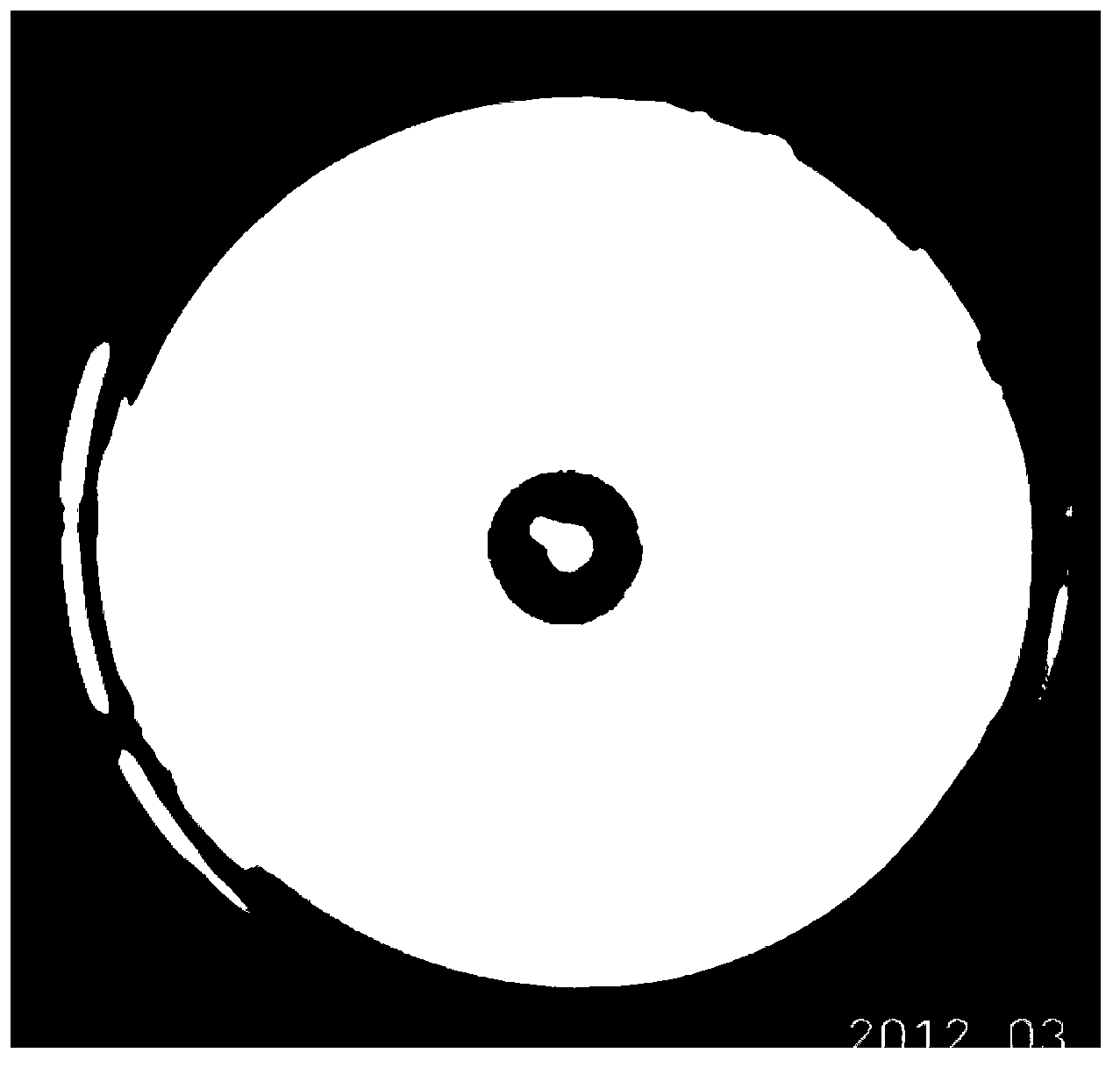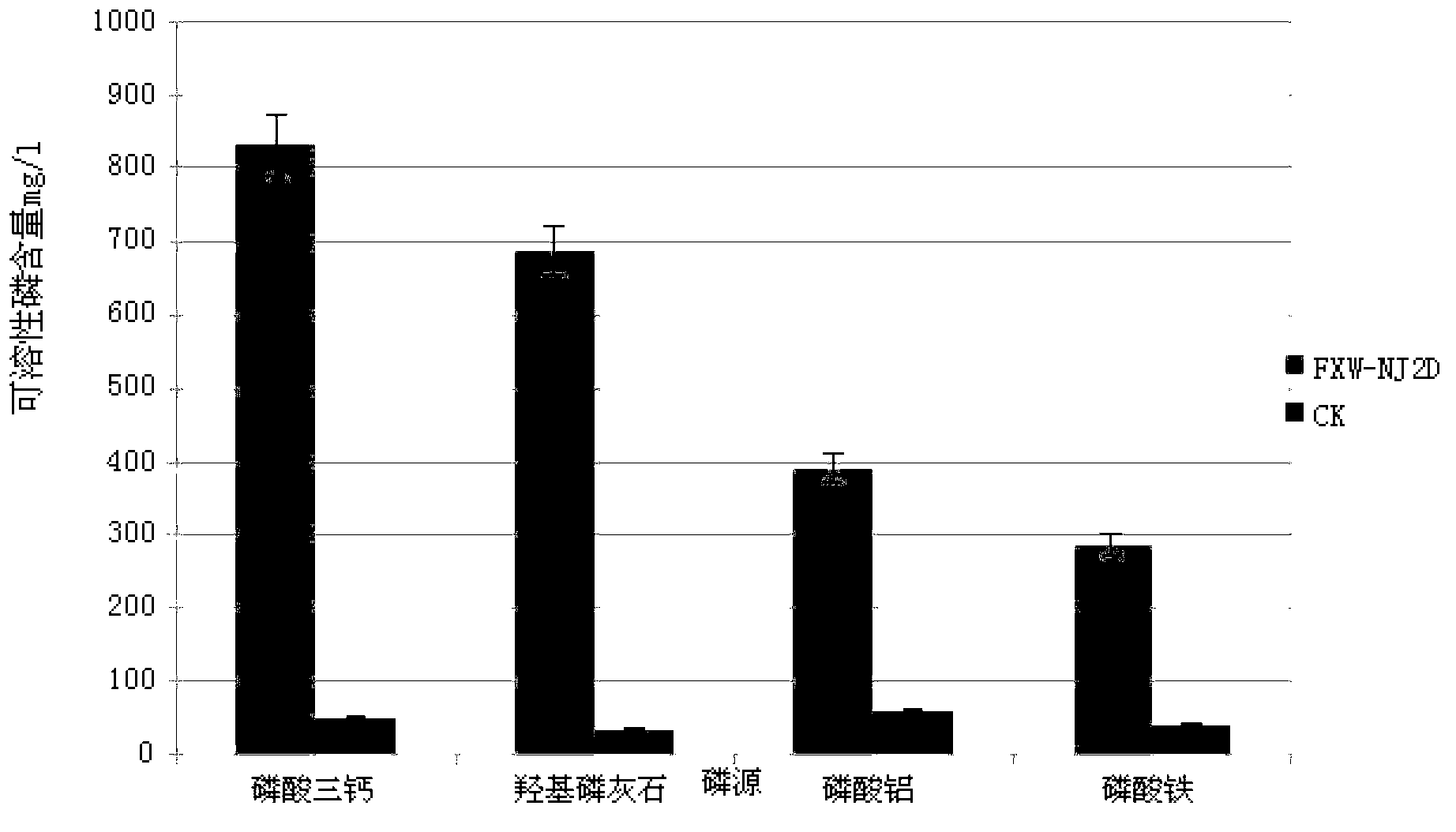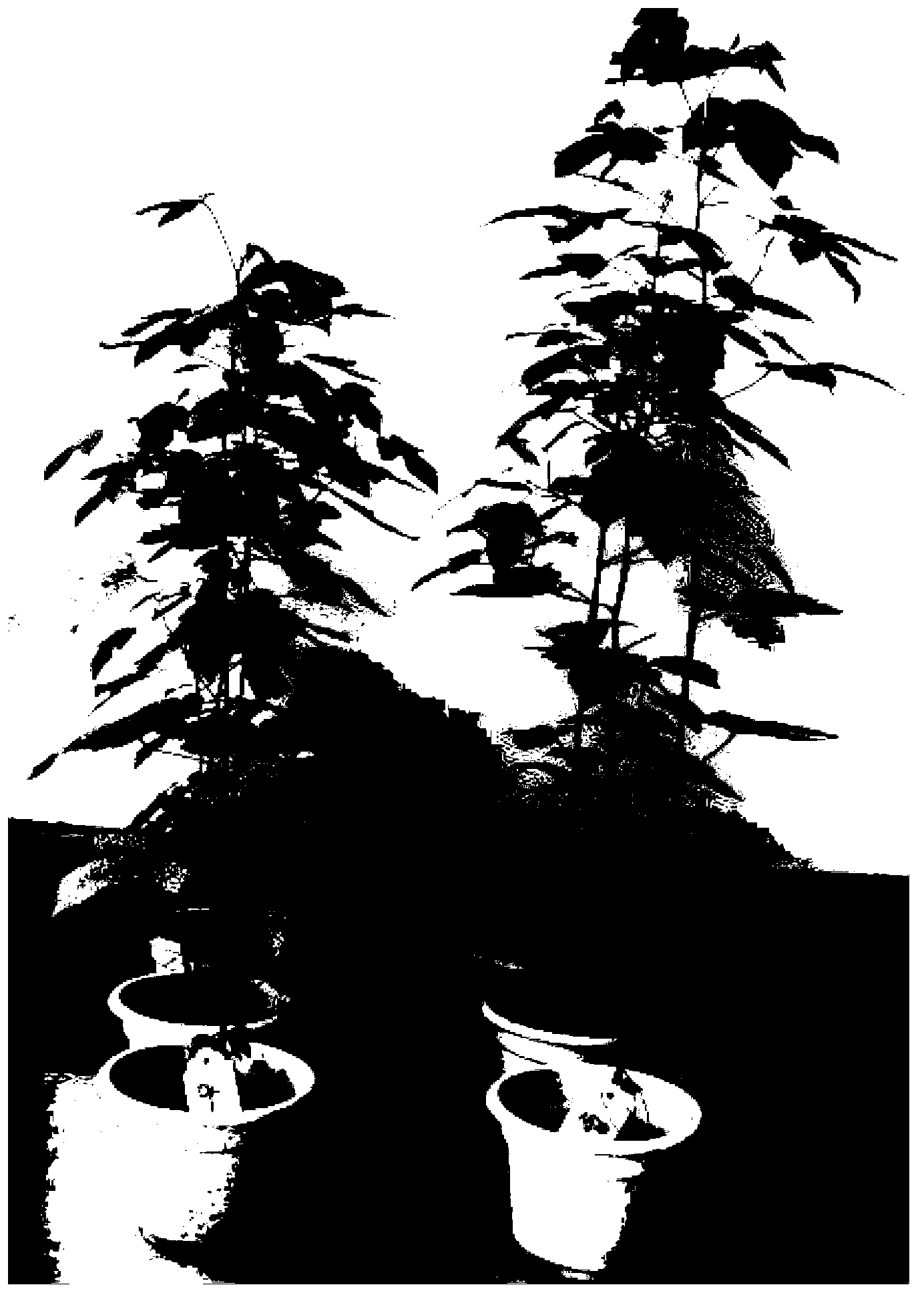Serratia marcescens and application of serratia marcescens in promoting growth of Chinese sweetgum
A technology of Serratia marcescens and sweetgum, applied in the field of biological fertilizers and microbial fertilizers, can solve the problems of few research reports, and achieve the effect of promoting growth and development and excellent strain resources
- Summary
- Abstract
- Description
- Claims
- Application Information
AI Technical Summary
Problems solved by technology
Method used
Image
Examples
Embodiment 1
[0021] Example 1: Determination of Phosphorus Solubilizing Ability of FXW-NJ2D Plate.
[0022] NBRIP medium: glucose 10g, Ca 2 (PO 4 ) 3 5g, MgCl 2 5g, KCl0.2g, MgSO 4 ·7H 2 O0.25g, (NH 4 ) 2 SO 4 0.1g, distilled water 1000mL, pH 7.0, sterilized, pour plate.
[0023] Spot the FXW-NJ2D strain activated twice on the NBRIP plate with an inoculation loop, and after culturing at 30°C for 5 days, measure the diameter of the phosphorus-dissolving circle and the diameter of the colony, and calculate the ratio of the phosphorus-dissolving circle to the diameter of the colony ( figure 1 ).
[0024] from figure 1 It can be seen from the figure that after the FXW-NJ2D strain was cultured on the NBRIP plate, it could produce obviously opaque phosphate-dissolving circles. After measurement and calculation, the diameter of the phosphorus-dissolving circle is 14.67mm, the diameter of the colony is 4.94mm, and the ratio of the phosphorus-dissolving circle to the colony is as high as...
Embodiment 2
[0025] Example 2: Laboratory phosphorus solubilization test of FXW-NJ2D strain.
[0026] Phosphate Solubilizing Medium A: Glucose 10g, Ca 3 (PO 4 ) 2 5g, MgCl 2 5g, KCl0.2g, MgSO 4 ·7H 2 O0.25g, (NH 4 ) 2 SO 4 0.1g, distilled water 1000mL, pH 7.0.
[0027] Phospholytic medium B: with hydroxyapatite (Ca 10 (PO 4 ) 6 (OH) 2 ) instead of Ca in phosphate-dissolving medium A 3 (PO 4 ) 2 , the other components and contents are the same.
[0028] Phospholytic medium C: ferric phosphate (FePO 4 4H 2 O) instead of Ca in phosphate-dissolving medium A 3 (PO 4 ) 2 , the other components and contents are the same.
[0029] Phospholytic medium D: aluminum phosphate (AlPO 4 ) instead of Ca in phosphate-dissolving medium A 3 (PO 4 ) 2 , the other components and contents are the same.
[0030] Inoculate the activated FXW-NJ2D strain into NA medium (3g of beef extract, 10g of peptone, 5g of sodium chloride, 1000mL of distilled water, pH 7.2~7.4), shake culture at 28°C ...
Embodiment 3
[0032] Embodiment 3: FXW-NJ2D greenhouse pot experiment:
[0033] After activating the strain FXW-NJ2D, use an inoculation loop to pick a small amount of bacteria and inoculate them into a 100mL Erlenmeyer flask containing 50mL of NA medium (3g of beef extract, 10g of peptone, 5g of sodium chloride, 1000mL of distilled water, pH 7.2~7.4), Culture at 29°C with shaking at 200r / min for 48h. Centrifuge the fermentation broth (4°C, 6000r / min) for 5 min, rinse the bacteria with sterile normal saline for 3 times, adjust the bacterial suspension with sterile normal saline (10 8 cfu / mL) to make an inoculum. Inoculate Chinese sweetgum (seedling age 1 year), with the same amount of sterile saline as the control, the inoculation amount is 5mL / plant of seedlings. 10 replicates per treatment were placed in the greenhouse for unified management, the light was 12h / day, and watering was timely.
[0034] The growth of Chinese sweetgum 150 days after inoculation is shown in Table 1. It can be...
PUM
| Property | Measurement | Unit |
|---|---|---|
| diameter | aaaaa | aaaaa |
| diameter | aaaaa | aaaaa |
Abstract
Description
Claims
Application Information
 Login to View More
Login to View More - R&D
- Intellectual Property
- Life Sciences
- Materials
- Tech Scout
- Unparalleled Data Quality
- Higher Quality Content
- 60% Fewer Hallucinations
Browse by: Latest US Patents, China's latest patents, Technical Efficacy Thesaurus, Application Domain, Technology Topic, Popular Technical Reports.
© 2025 PatSnap. All rights reserved.Legal|Privacy policy|Modern Slavery Act Transparency Statement|Sitemap|About US| Contact US: help@patsnap.com



